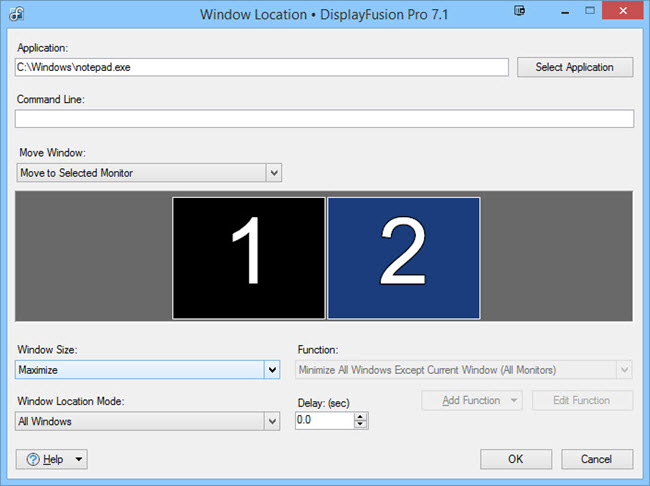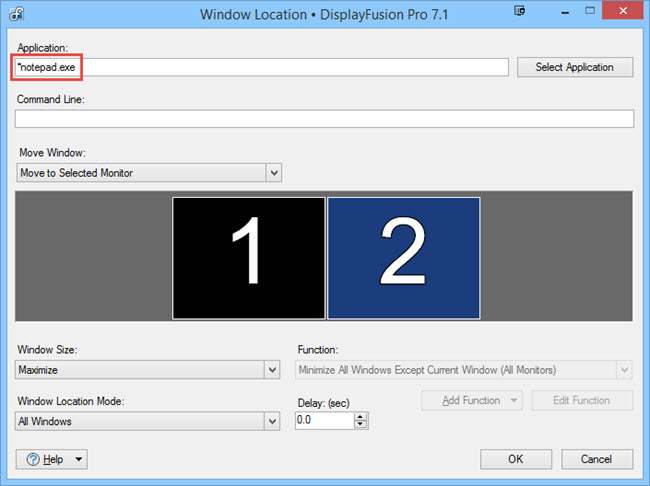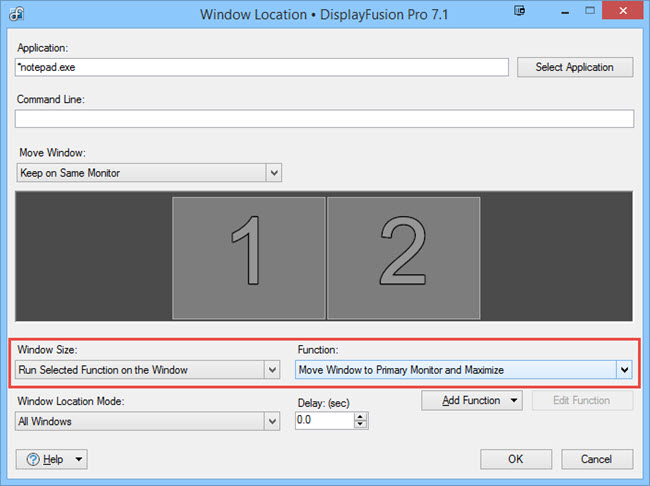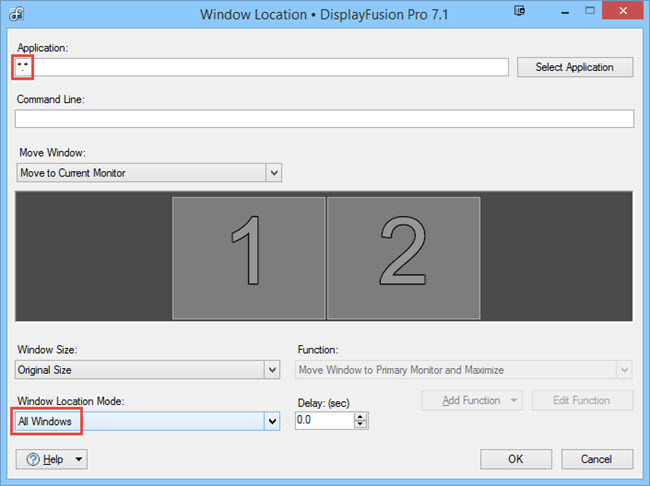Please note: The MSI Installer has special requirements when being deployed. Please read the MSI Installation section carefully, and as always, make sure to test it thoroughly before deploying it into production.
Note: The DisplayFusion installer requires administrative privileges in order to run successfully. If the installer is run using an account that doesn't have administrative privileges on the system, UAC will request the credentials for an administrative account on the system.
The EXE installer will automatically close DisplayFusion (version 3.2.1+) when being run in silent mode. This is very useful for deployments. For more options, please consult the Inno Setup help file that comes with Inno Setup.
The following parameters are especially useful for deployments.
The following MSI properties are especially useful for deployments. Any of the properties below can be included in an MST (transform) file if deploying via Group Policy. If you create your own MST file, you must include the CUSTOM1="/VERYSILENT", LAUNCHAFTER=0, STARTUPALL=1, and STARTUPUSER=0 properties for deploying the MSI through Group Policy Software Installation.
Update: The sale is over!
To celebrate the arrival of summer, we're offering up to 25% off DisplayFusion, and 15% off all of our other products!
If you're not familiar with all of our apps, feel free to check them out on our More Apps page.
Have an excellent summer, everyone!
Note: Starting with DisplayFusion 8.0, Window Location has been replaced by the more powerful feature, Triggers. You can find out more about Triggers here: https://www.displayfusion.com/Discussions/View/working-with-triggers/?ID=43b31609-4ec6-4478-99f8-a1f11e9793f7
Window Location is a powerful feature that allows you to set the default location of an application's first window only, or the first window as well as subsequent child windows. You can have the application automatically move to a specific monitor and have it centred, maximized, or minimized. If you want to get even fancier, you can have the Window Location rule run any function from the list of functions on the Settings > Functions tab. You can even create a custom function to set the exact location and size in pixels, or you can create a scripted function to do almost anything you like with the window.

If you want a Window Location rule to apply to multiple applications, you can use an asterisk as a wild card, or you can specify multiple programs separated by a pipe. Here are some examples:



mstsc.exe /span